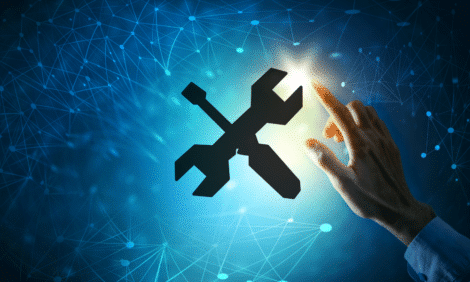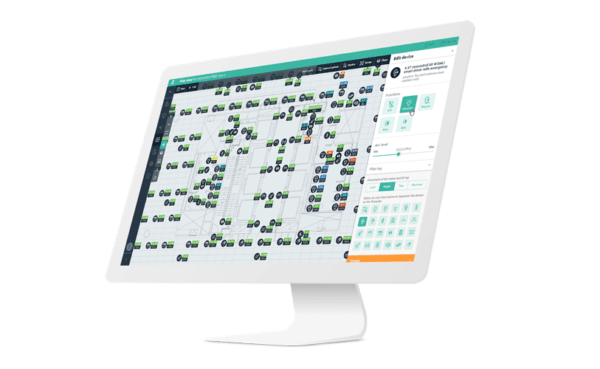Maintain and Optimise Your Lighting System
As with all building systems, lighting and lighting control systems must be serviced and maintained properly.
In principle, lighting is not really about a building, it is about the people using the space. Over-illumination is not only wasteful, but it can also cause headaches and stress for staff. Not enough light can cause eye strain, or even be dangerous.
As new technology is developed, it also becomes possible to improve upon original lighting designs and setups to enhance and improve the functionality of different areas.

Regular Maintenance and Reviews
Regular lighting system maintenance and reviews will ensure any issues are dealt with before they cause problems for your staff, will improve the longevity of your lights, and will keep you informed of possible changes or upgrades to improve the lighting system.
Issues such as lamp or driver failures obviously need to be dealt with as and when they occur, but maintenance is not just about replacing faulty equipment, it should include regular, scheduled, system maintenance and system reviews.
Lighting System Maintenance and Reviews Should Include a Focus on:
1. ENERGY SAVING
Maintaining Efficiency of Light Sources
As luminaires degrade over time, it results in reduced efficiency. Although the aging of the luminaire is the principal cause, degradation can be worsened if the luminaire becomes dirty. Reflective surfaces should be cleaned regularly as part of the scheduled maintenance of your lighting system.
As faulty or aging components are identified, they should be replaced with more energy-efficient options.
Maintained Illuminance
Regular checks and adjustments as part of your lighting system maintenance regime are necessary to ensure that lighting remains constant, using only the required level of illumination.
Smart controls can assist here by adjusting light out put to deliver a fixed lumen value, but even then regular checks should be implemented to ensure the system has not become mis-aligned with a change in the use of an area.
Optimal Performance
In the same way, adjustments may be required to the settings that were originally designed to maximise energy efficiency. To ensure that the lights are operating at optimal efficiency, it may be necessary to calibrate sensors, adjust timers and schedules, or fine tune dimming.
If you have a lighting control system, data from the system can be used to target areas where waste can be reduced.
2. LIGHTING ENHANCEMENT
Consistency
With age, lighting output can diminish or change both in output and colour. Regular lighting system maintenance ensures the consistent light quality needed to create comfortable environments for people to flourish.
With a control system, dependent on sensor capabilities, a decrease in output or shift in colour can be easily detected and flagged for follow up.
As faulty or aging components are identified, they should be replaced with more energy-efficient options.
Changing Needs
In modern commercial buildings, it is common for needs to change, with spaces within the building being used differently than originally envisaged.
Continuous adjustments ensure that the lighting evolves to meet the needs of the changing environment.
With a lighting control system, output can be adjusted to reflect usage patterns that may vary according to time of day, occupancy level, or even different tasks being undertaken.
Sensors can identify low-traffic areas over time, and the control system can be programmed to adjust automatically and appropriately to reflect this consideration.
Aesthetics and Comfort
Lighting is an important element of most workplaces, contributing to both visual appeal, ambience, and the comfort of a space. Encompassing appropriate colour rendering, absence of flickering, and even light distribution, good illumination enhances user experience, boosts a sense of wellbeing, and leads to improvements in performance.
It is important that regular maintenance checks are conducted to ensure the beneficial elements of the lighting system are consistently preserved, and any negative effects (such as flickering LEDs) are quickly put right.
3. FINANCIAL INVESTMENT
Longevity of Your Lighting System
All building systems should be evaluated and adjusted regularly. This process is referred to as “continuous commissioning” and is particularly important when it comes to lighting.
Continuous commissioning identifies inefficiencies or potential issues early, allowing for corrective actions that extend the service life of the luminaires and associated systems.
A control system is necessary for effective continuous commissioning of the lighting, which can then be integrated with heating, cooling, security, AV and other systems for enhanced energy management and overall building performance
The continuous commissioning process ensures that lighting systems are aligned with the latest standards and requirements. This prevents premature obsolescence and keeps the lighting system performing at its best.
Included in the lighting system maintenance process should be firmware updates to improve functionality, but also ensure that security is not compromised.
Building Security
Your lighting control system can be integrated with a security system to assist with surveillance capability, for instance by illuminating specific areas in response to motion detection.
Lighting the exterior of the building after dark deters criminal activity but can be linked with motion detection and schedules to be in use only when required.
Having the exterior of the building and carpark areas well illuminated contributes to a safer environment and ensures staff feel secure and comfortable entering and exiting the building outside of daylight hours.
With a control system safe pathways of light can be provided, lighting adjacent areas, as well as the one where motion is detected. At the same time, energy is saved as other vacant areas of the carpark or building exterior can remain in darkness.
Asset Value
It seems rather obvious to point out that a well-managed and maintained building will have an increased asset value.
Meeting sustainability goals will not only affect the bottom line, but the building will be perceived as a more attractive environment in which to work, have greater appeal to tenants or purchasers, and demand a higher lease or sale price.
Optimising and maintaining the lighting system will demonstrably extend the lifespan of the luminaires, and the control system will be able to supply data to validate savings in energy and maintenance costs. All of which will have a positive impact on those seeking to buy or to tenant the building.
Reviewing Your Lighting System
As organisations aim to become greener, and business plans include sustainability goals as “must haves” rather than “nice to haves” the reduction of energy through the optimisation of lighting will become essential.
If regular lighting system maintenance and optimisation is unable to provide the benefits referred to in the sections above, now may be the time to seek some advice as to how your lighting system could be upgraded.
zencontrol DALI-2 (wired) or DALI+ (wireless)
Upgrading to a zencontrol DALI system will allow you to visualise your building’s data via a dashboard to support green initiatives and ensure you are meeting your sustainability KPIs.
Lighting is the most visible platform that demonstrates how your organisation uses (or wastes) energy. Lights that are on when they shouldn’t be, send a clear message to customers, staff and the public, that may be contrary to the image your company wishes to convey.
zencontrol DALI meets all aspects of the lighting control standard for Australia and New Zealand but remains the DALI open protocol supported by a multitude of manufacturers, thus not handcuffing you to using only zencontrol products.
Backwards compatibility ensures support for the life of the control system.
zencontrol DALI is our preferred system as these are advantages that cannot be guaranteed by platforms based on a proprietary, company specific solution.
DALI was adopted as the lighting control standard for a reason. With a DALI system, security of supply and the extending of the useful life of the lighting system for a building, can be taken for granted.
But if DALI is the sausage . . . zencontrol is the sizzle!
The zencontrol cloud will allow you to monitor, adjust, assess and maintain your lighting system from anywhere! You can even automate the monitoring, testing and reporting of emergency lighting, making compliance simple and less costly.
Faulty light fittings or associated devices are immediately identified for ease of maintenance, with information at your fingertips such as ‘within’ or ‘without’ warranty, date of installation, hours of burn time, etc.
zencontrol systems can be basic, but provide potential for later expansion when budgets allow, or comprehensive, covering multiple sites, with energy dashboards, heat mapping, sensors reporting on lighting, occupancy, air quality, sound, humidity, and more.
If you’re considering a system upgrade, talk to us first. No obligation . . . just happy to share our knowledge and point you in the right direction to meet your budget and your goals!


